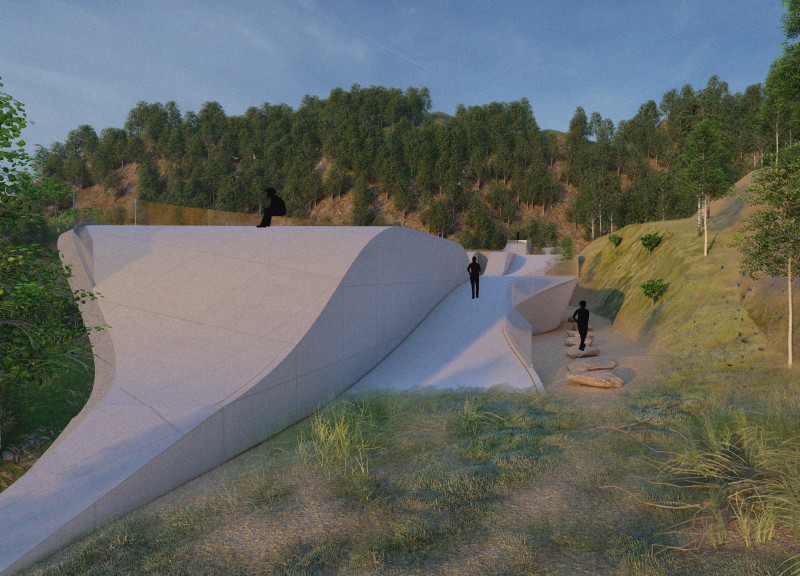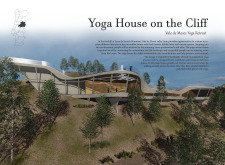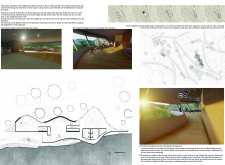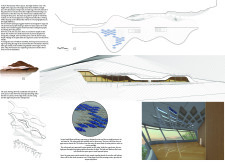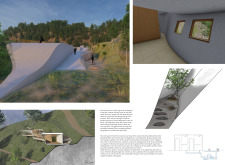5 key facts about this project
The building features an elongated, curvilinear form that aligns with the gentle contours of the landscape. This design approach enhances the visual connection with the surrounding environment, creating a sense of continuity between the structure and the natural world. The use of large glass windows throughout the building allows for ample natural light and unobstructed views of the valley, further bridging the gap between indoor and outdoor spaces.
Unique Design Approaches
The architectural design prioritizes fluid movement and user interaction. Users are encouraged to explore different pathways within the building, promoting autonomy and personalized experiences. The design includes multiple entry points and a variety of circulation routes, minimizing congestion and allowing individuals to choose their paths as they navigate the space.
Sustainability is a key component of this project. The building's roof incorporates solar panels, which contribute to its energy-efficient profile, and greywater recycling systems support the maintenance of xeriscaped gardens. These elements reflect a commitment to environmentally responsible design while enhancing the wellness experience for users.
Materials and Construction
The choice of materials plays a critical role in the project's overall ambiance. The primary structural material is concrete, offering both durability and resilience. Interior spaces prominently feature timber, which adds warmth and enhances the natural aesthetic. Expansive use of glass helps to open up spaces, creating a light-filled environment that invites occupants to connect with nature.
Overall, the Yoga House on the Cliff represents a thoughtful integration of architectural design and functional wellness space. For those interested in exploring the true essence of this project, examining the architectural plans, architectural sections, and architectural designs can provide deeper insights into its unique qualities and design philosophies. We invite you to delve further into these elements for a comprehensive understanding of the Yoga House on the Cliff and its architectural ideas.


